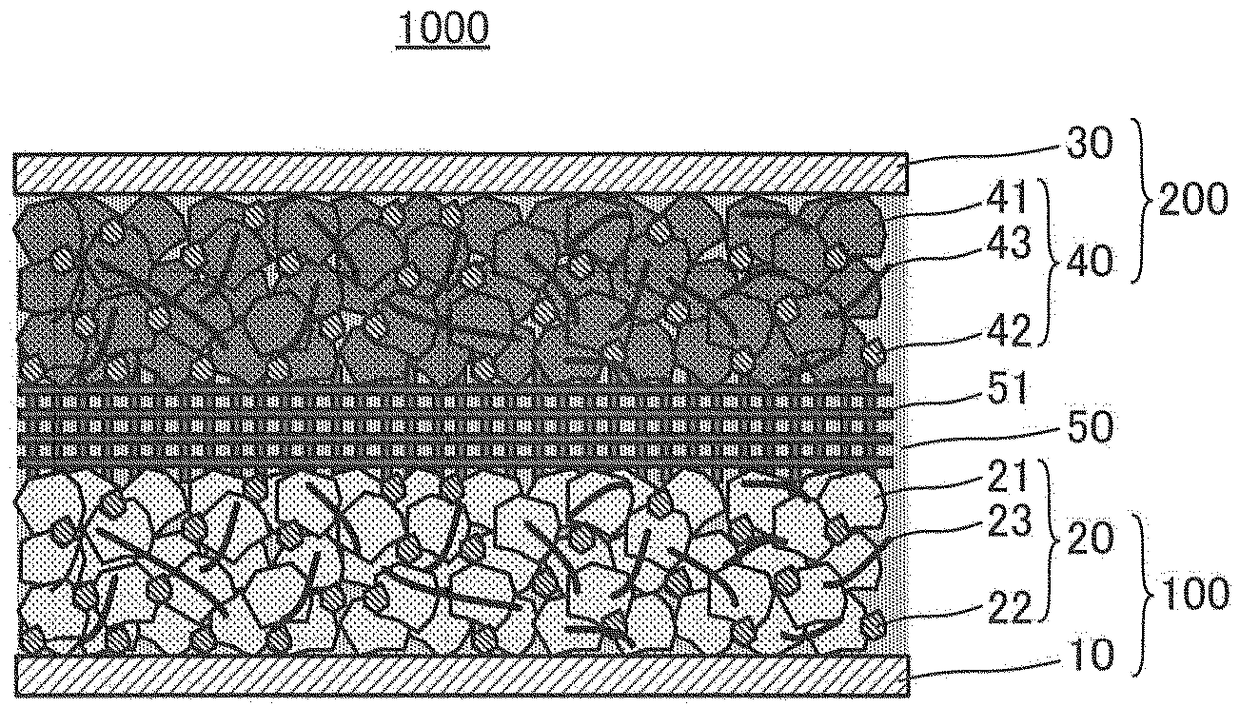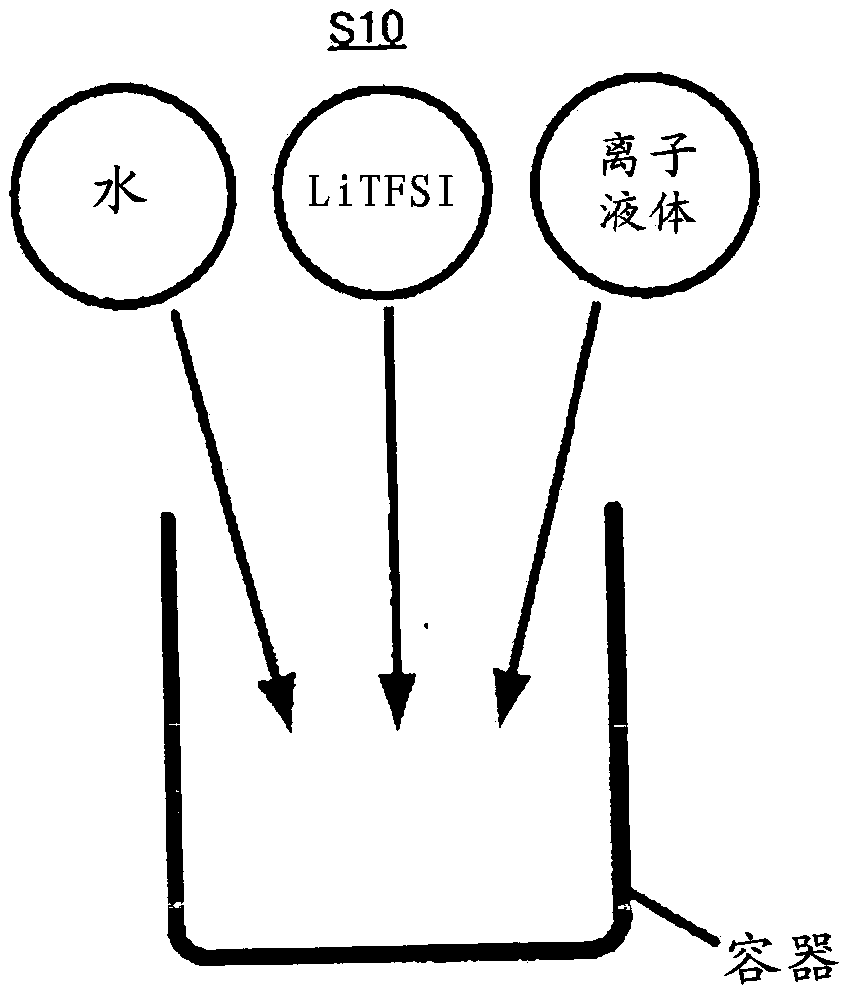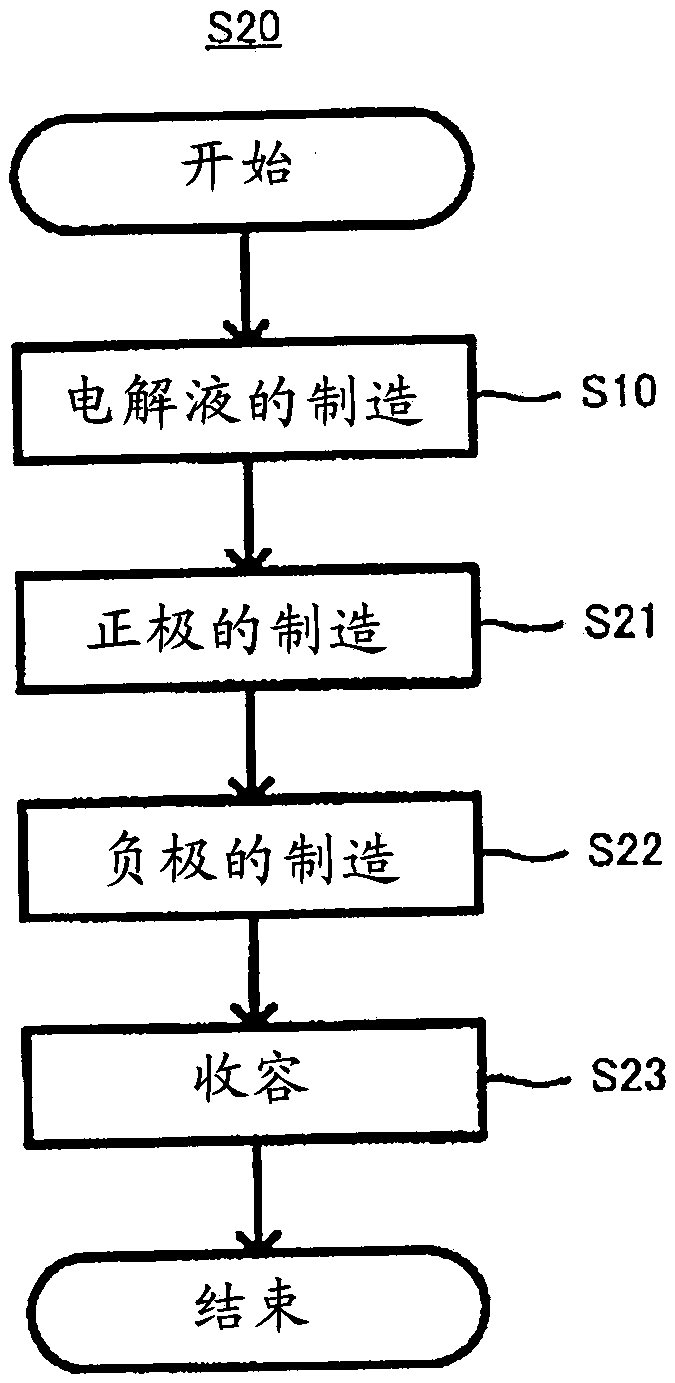Aqueous electrolyte solution and aqueous lithium ion secondary battery
A water-based electrolyte and secondary battery technology, applied in secondary batteries, non-aqueous electrolytes, aqueous electrolytes, etc., can solve problems such as narrow potential window and active material limitation, and achieve higher battery voltage and larger discharge capacity Effect
- Summary
- Abstract
- Description
- Claims
- Application Information
AI Technical Summary
Problems solved by technology
Method used
Image
Examples
Embodiment 1
[0132] 5 mol of LiTFSI was dissolved in 1 kg of pure water to obtain a solution (A1).
[0133] 1 mol of LiTFSI was dissolved in 1 kg of an ionic liquid (butyltrimethylammonium-bis(trifluoromethanesulfonyl)imide, BTMA-TFSI) represented by the following formula (2) to obtain a solution (B1).
[0134] Solution (A1) and solution (B1) were mixed at a volume ratio of 1:1 to obtain the aqueous electrolyte solution involved in Example 1.
[0135] [Chem 2]
[0136]
[0137] Butyltrimethylammonium-bis(trifluoromethanesulfonyl)imide
Embodiment 2
[0139] 10 mol of LiTFSI was dissolved in 1 kg of pure water to obtain a solution (A2).
[0140] 1 mol of LiTFSI was dissolved in 1 kg of the ionic liquid represented by the above formula (2) to obtain a solution (B2).
[0141] Solution (A2) and solution (B2) were mixed at a volume ratio of 1:1 to obtain the aqueous electrolyte solution involved in Example 2.
Embodiment 3
[0143] 21 mol of LiTFSI was dissolved in 1 kg of pure water to obtain a solution (A3).
[0144] 1 mol of LiTFSI was dissolved in 1 kg of the ionic liquid represented by the above formula (2) to obtain a solution (B3).
[0145] Solution (A3) and solution (B3) were mixed at a volume ratio of 1:1 to obtain the aqueous electrolyte solution involved in Example 3.
PUM
 Login to View More
Login to View More Abstract
Description
Claims
Application Information
 Login to View More
Login to View More - R&D
- Intellectual Property
- Life Sciences
- Materials
- Tech Scout
- Unparalleled Data Quality
- Higher Quality Content
- 60% Fewer Hallucinations
Browse by: Latest US Patents, China's latest patents, Technical Efficacy Thesaurus, Application Domain, Technology Topic, Popular Technical Reports.
© 2025 PatSnap. All rights reserved.Legal|Privacy policy|Modern Slavery Act Transparency Statement|Sitemap|About US| Contact US: help@patsnap.com



